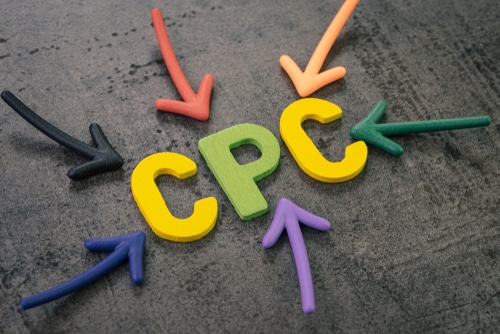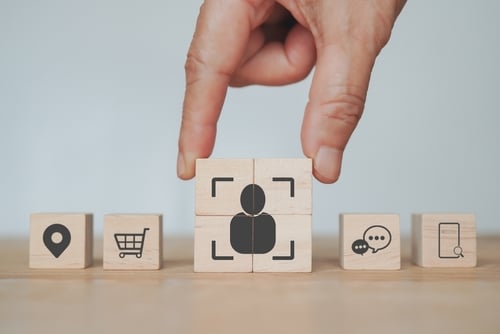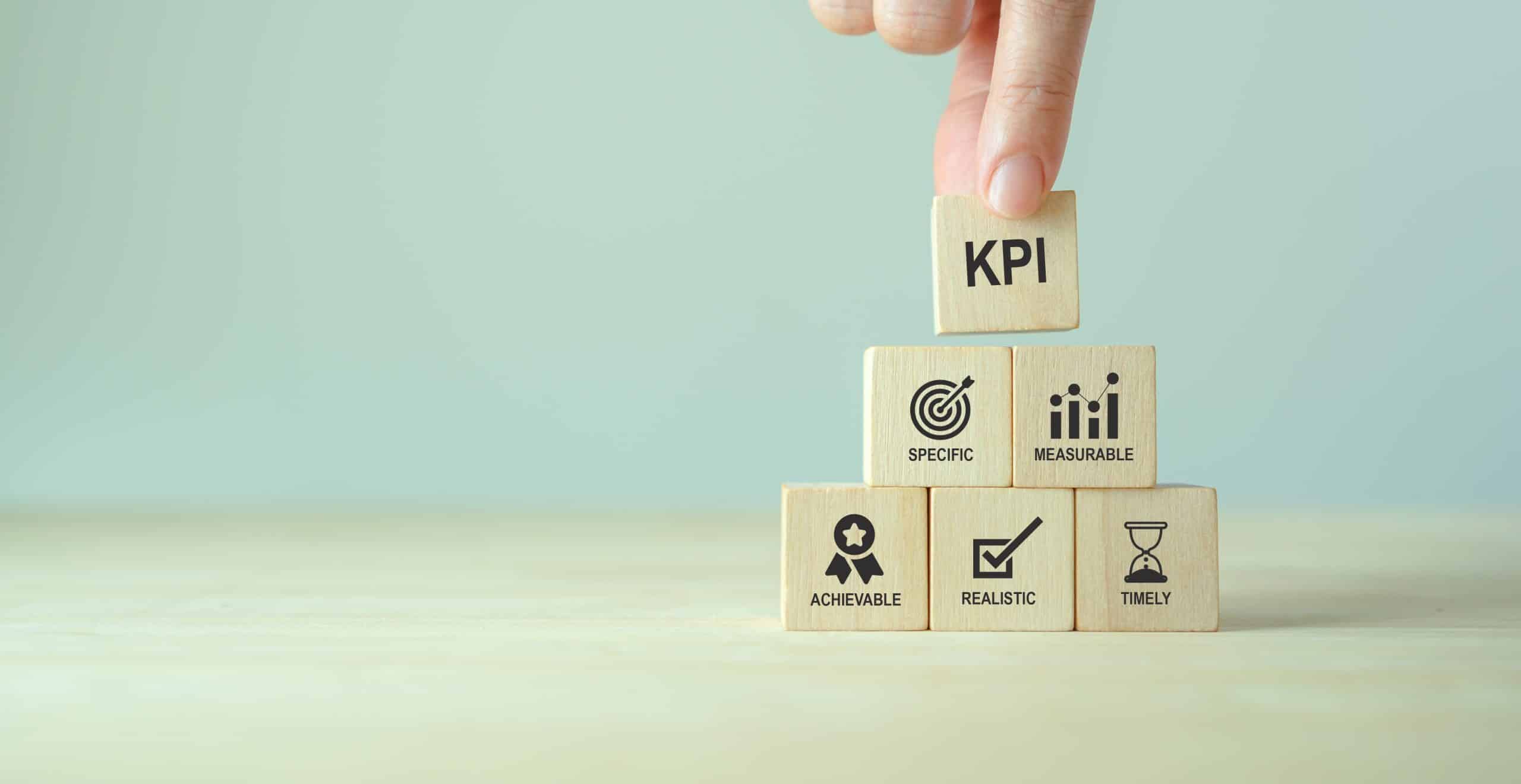Today’s digital commerce landscape is filled with competition and distractions, making it harder for brands to stand apart from the crowd and generate converting leads. Typically, this process starts at the top of the marketing funnel, as brands vie for attention using brand awareness techniques, like native marketing. In an ideal situation, those customers continue to engage with a brand, making it to the “bottom of the funnel.”
The bottom of the funnel is the last step before a revenue-earning conversion, where potential customers evaluate a product and brand, inching closer to making a decision, or in this case, a purchase.
As the customer’s needs and sentiment shift, so too must a brand’s marketing efforts. To successfully usher a shopper into the final stages, you need a data-driven strategy and messaging that helps a potential customer choose your brand.
Below, I’ll explain bottom-of-funnel marketing and provide insight into how to maximize conversions and ROI at this critical stage.
What Is Bottom of the Funnel?
The bottom of the funnel (BOFU) refers to the final stage of a buyer’s journey. By reaching this point, potential customers have moved through other parts of the funnel: In many cases, that means they’ve identified their problem, researched solutions (e.g., other products or services), and are actively deciding which one best fits their needs.
Since customers in the bottom of the funnel are narrowing down their search, marketing efforts should shift from education to persuasion and assurance. In essence, the marketers are tasked with answering one key question: Why should a customer choose your product/service over someone else’s?
Goals for the Bottom of the Funnel
BOFU shoppers are primarily looking for trust signals, brand advantages, and a reason to complete the checkout process. As such, these goals are paramount to successful BOFU marketing initiatives.
Convert Leads Into Customers
You’ve captured the lead at this point in the funnel, but you still need to close the deal. Marketing strategies should center on encouraging purchase decisions through urgency, trust-building, and product/service clarity.
For instance, if a customer engaged with a product description page or downloaded a service comparison sheet, a BOFU strategy may follow up with a personal email offering a limited-time discount paired with a positive customer or influencer testimonial. This works to nudge the shopper forward with a sense of urgency, while providing positive customer feedback and brand credibility.
Conversions rely on your understanding of the audience, so the better your data, the more success you will see. By utilizing an ad platform working from high-quality first-party data, able to target customers by actual intent, rather than simple demographics, you’re more likely to see conversions.
Minimize or Remove Barriers
Even high-intent shoppers ready to purchase can be derailed by a confusing UX or unclear calls to action (CTAs). Any bottom-of-the-funnel efforts, including the checkout page, should create a smooth path to purchase, anticipating hangups, removing those barriers, and reducing the risk of abandoned carts.
Simplifying the checkout process to as few steps as possible, offering multiple payment methods, or adding live, easy-to-access chat for any last-minute questions can help boost conversions.
Build Confidence
Confidence drives conversion, so when potential customers feel like they’ve made the right choice, they are more likely to move ahead with the checkout process. As such, it’s vital that marketing teams work to reinforce the value and credibility of your solution based on the customer’s profile. To build confidence, consider adding customer testimonials, ensuring transparent pricing, and highlighting any guarantees or return policies, when available.
Types of Content for the Bottom of the Funnel
At the bottom of the funnel, content should be clear, action-oriented, and focused on product value and differentiation. Some of the most effective BOFU content formats include:
Customer Testimonials
Testimonials serve as powerful social proof at the decision-making stage. When buyers hear directly from satisfied customers, especially those with similar needs or in similar industries, it helps eliminate hesitation.
Short video clips, ratings, links to social profiles for influencers, or quotes with real names and photos can dramatically boost believability and emotional resonance. Place these testimonials strategically across product pages, emails, landing pages, or even as part of retargeting campaigns to reinforce confidence and move potential customers to purchase.
Case Studies
Case studies demonstrate real-world results using specific, clear, and measurable outcomes, providing proof that your solution works, not just in theory but in practice. This makes them a highly effective tool for bottom-of-the-funnel efforts.
A well-written case study should include the problem, solution, implementation, and results. Bonus points for including quotes, metrics, or before-and-after comparisons to drive credibility and relatability.
Comparison Content
Though customers have largely moved past the educational part of the funnel by the time they reach the bottom, there is still value in some targeted education, specifically comparison pages or similar content.
Customers have likely narrowed their choices to a handful of products or services by this point. A side-by-side comparison page highlights your product’s strengths in terms of pricing, features, support, integrations, ease of use, etc. Further, a comparison page allows you to control the narrative without relying on aggressive promotion.
Product Demos
Even the most thorough product page falls short if it doesn’t provide a glimpse at the product in use. A polished, well-structured demo video can help users visualize exactly how the solution works, or highlight what sets it apart from the competition. Videos can be keyed to highlight certain features, walk through real use cases, or demonstrate ease of setup or use.
Best BOFU Channels for Conversions
Different channels serve different purposes at the BOFU stage. Here are the top performers when you’re aiming for conversion:
Email Marketing
Leverage retargeting emails that are segmented and personalized, paying attention to sequence and timing. To strengthen email efforts, use behavior data to send product recommendations, consider offering personalized discounts, and give a gentle nudge with a time-sensitive deal. Emails are also a great opportunity to leverage customer testimonials, product comparisons, and demos.
Retargeting Ads
Retargeting ads can be vital at various points in the funnel, but bottom-of-the-funnel customers are a valuable audience for this type of effort. Shoppers who have visited product pages multiple times, added items to a cart, or abandoned carts are often just a few clicks away from converting. Leveraging retargeting ads can help keep your brand at the top of mind and encourage customers to complete the purchase before they choose a different direction.
One thing to beware of here is ad fatigue, i.e., customers getting tired of seeing the same ads over and over again. Be sure that your ad platform of choice is able to correctly identify those users most likely to buy, and target them with ads based on their specific wants/needs, rather than more simplistic factors like location, age, etc. Look for ways to optimize these ads in real time, such as with a platform powered by a dedicated performance AI.
Webinars or Live Demos
Live demos and webinars offer high-touch opportunities to connect with prospects — especially B2B clients — who are seriously considering a purchase. These formats let potential customers ask questions in real time, see your product in action, and interact directly with a brand representative, all of which can build trust and shorten the sales cycle. To make the most of these sessions, tailor the content using registrant data and follow up promptly with a recap, bonus resources, or a personalized offer.
SMS and Push Notifications
Mobile-based communication channels like SMS and push notifications are excellent for real-time engagement with warm leads. These messages work best when they’re personalized and timely, like a reminder about an expiring discount, a cart left behind, or a product that’s back in stock. At the BOFU stage, these nudges can provide just the right amount of urgency to push a decision or hook a recipient with a limited-time deal. Keep the copy concise, and always include a clear CTA that directs the user to take action immediately. Just keep in mind that there is a fine line between some helpful, well-timed reminders and text spam.
Strategies to Drive Sales Conversion at the Bottom of the Funnel
The key to BOFU success is anticipating buyer hesitations and removing them before they become deal-breakers. Here’s how:
Pricing and Discounts
Strategic pricing and limited-time offers can help move prospects from consideration to conversion. Tailor discounts based on user behavior, such as abandoning a cart or visiting pricing pages multiple times. Whether it’s a loyalty offer or a first-time buyer discount, personalized pricing incentives can be the final nudge that closes the sale. Delivery is essential here: Use urgency-driven language (“Ends Tonight!” or “Only 3 Spots Left”) in your messaging.
Comparisons to Competitors
Prospects at the bottom of the funnel are often weighing their options. Help them decide by offering clear, transparent comparisons to competitors. Highlight what makes your product stand out — price, features, ease of use, support, etc. Create dedicated comparison pages or include side-by-side breakdowns in emails or ads. The goal is to show, not just tell, why your solution is the smarter choice.
BOFU Case studies and Testimonials
Case studies and testimonials offer specific examples of how your product has helped real customers resolve a shared issue, overcome a challenge, or achieve success. This social proof is especially valuable at the bottom of the funnel, as it provides the persuasion necessary during the decision-making stage.
Highlight metrics and results whenever possible: Testimonials and short-form quotes can work well on landing pages and in emails, while longer case studies are ideal for gated content or retargeting ads. Prospects want to see real stories from people like them.
Product Pages Highlighting Features
In the absence of a brick-and-mortar location, your product pages should function as your best salesperson. Include detailed feature descriptions, comparison charts, FAQs, and quality visuals, such as high-resolution imagery and/or demo videos.
Your product page should aim to answer every question a prospect may have in a clear and accessible way. But that’s not limited to product details: A successful product page also sends trust signals through well-placed reviews, security badges, and any sort of satisfaction guaranteed messaging when applicable.
Trials and Demos
A free trial or live demo can alleviate some of the uncertainty related to product purchases while building confidence and trust, and reducing a sense of risk. Make signing up for the trial or demo easy, and support the experience with helpful onboarding content. Follow up during and after the trial period with reminders, feature highlights, and encouragements to upgrade — timing here is key to securing the conversion.
Guarantees and Risk Mitigation
Most purchases carry some level of risk. For some customers, it’s losing out on a few dollars, but for others, it’s far more substantial. Reducing that perceived risk can be a powerful conversion lever: Money-back guarantees, no-obligation trials, or easy return policies help alleviate the fear of making the wrong choice.
Clearly communicate these risk-mitigation elements across product pages, in cart flows, and in follow-up emails. These assurances show prospects that you stand behind your product and that they have nothing to lose by trying it.
Support
When buyers have last-minute questions, fast, responsive, and reliable live support can be the difference between conversion and abandonment. Live chat, chatbots, or clearly visible customer support options can help prospective customers feel you have their backs.
Remember that a poor customer support experience can turn a customer away, often for good. Make sure your team is trained to answer both product-specific and logistical questions. Further, if you choose an AI-generated support system, make sure it’s fully vetted and capable of helping, not hindering, customers.
Strategies to Optimize for ROI at the Bottom of the Funnel
Once you have a bottom-of-the-funnel strategy in place, it’s time to optimize. Here are a few ways you can maximize your efforts:
Use Smart Bidding Strategies
AI-powered bidding tools adjust bids in real time based on conversion likelihood, helping you scale efficiently and keep acquisition costs aligned with effort.
Align Creative and Landing Pages
When it comes to trust signals, messaging cohesion is often an undersung hero. Misaligned or inconsistent messaging can lead to drop-offs, especially in the bottom of the funnel. Keep content and story-building efforts consistent from the first click to maximize conversions.
Personalize Campaigns
Every campaign should be segmented by funnel stage. Treating all users the same way can lead to a low CVR (conversion rate) at best. At worst, it can lead to unnecessarily high spending and alienated audiences. For instance, you may want to bid higher for high-intent segments and optimize separately for new vs. returning users. Likewise, cultivate content for landing pages, emails, and other retargeting efforts that support users based on their stage in the funnel.
Monitor Ad Frequency
Overexposure leads to ad fatigue, and that can quickly lead users to unsubscribe to emails, stop SMS communications, and put blinders on when they see your ad pop up online. Set frequency caps and rotate creatives regularly to avoid stale or overwhelming marketing efforts that will turn users away.
Bottom-of-Funnel Metrics
Watching and analyzing metrics is important at each point of the funnel, but performance at the bottom is vital to campaign success and acquisition. Here are a few key metrics to watch:
Return on Ad Spend (ROAS)
ROAS measures revenue earned for every dollar spent on advertising. It’s a core profitability metric and especially important when scaling BOFU campaigns. A high ROAS means your ads are paying off, while a low one means you’re overspending for results. Segment audiences by funnel stage and use smart bidding tools to increase bids on high-performing segments while protecting profit margins.
Cost per Acquisition (CPA)
CPA tracks how much it costs you to acquire a paying customer. Even with a high conversion rate, a rising CPA can erode profitability. It’s a key measure of efficiency and scalability at the bottom of the funnel stage, especially if you’re investing heavily in remarketing efforts. Refine your targeting and lean on tools, like AI-driven bidding platforms, to lower your CPA without sacrificing traffic quality or intent.
Click-through Rate (CTR)
CTR tells you how well your ads are resonating with your audience. A low CTR can signal weak CTAs or headlines, unengaging or stale visuals, or a poor understanding of your target audience and their needs and motivators. Since engagement is a precursor to conversion, this metric should always be closely monitored at every stage of the funnel. Consider running A/B testing for headlines, images, and ad placements, and focus on marketing platforms that make it easy to do so.
Conversion Rate
The conversion rate is the percentage of users who complete a desired action, such as purchasing a product, signing up for a webinar, or downloading a case study after clicking on an ad. Essentially, it measures how effective your efforts are after a user moves from one channel to a designated landing page. As such, even strong CTRs can fail to translate to high conversions, which should automatically signal an issue with your landing page. Ensure your ad and landing page messaging align perfectly, eliminate hurdles, and reinforce value propositions to make it easier for a potential customer to complete the desired action.
Cost per Click (CPC)
CPC shows how much you’re paying for each click on your ad. While clicks don’t guarantee conversions, rising CPC costs can drain your budget, especially if the ads don’t convert. Optimizing your CPC helps you stay efficient with spend and keep acquisition costs in line with outcomes. Narrow your targeting to the most relevant users and apply smart bidding rules to balance traffic and volume costs, especially at the bottom of the funnel.
Impression Share
Impression share is the percentage of times your ad was shown out of the total possible opportunities. A low impression share means you may be losing visibility due to budget limits or competitive bidding and can signal the need for campaign adjustments. Track your impression share closely: If it’s too low, consider increasing your budget or adjusting your bids to capture more high-value real estate.
Key Takeaways
Customers at the bottom of the funnel are ready to buy, but may need reassurance that your company or product is the best. Personalization and timing can drive high conversions for bottom-of-the-funnel customers, and you can establish confidence and trust by leveraging reviews, demos, high-quality images, and case studies that are applicable to your target audience. Remember, conversion is a primary goal, but it’s not the only one: Profitability is just as important, so always track ROAS, CPA, and CPC to balance conversion and acquisition spending.
Frequently Asked Questions (FAQs)
Top of funnel vs. bottom of funnel: What’s the difference?
Top of the funnel is about brand awareness and audience building. The goal is to draw customers and establish engagement. Bottom of the funnel is about conversion. At this point, site users are ready to buy but need a final push.
What is funnel strategy and does it work?
Yes, funnel strategy works! Funnel strategy guides users from discovery to decision using tailored content and channel strategies that meet users where they are in the buying process. Further, funnel strategy can help align marketing spend and strategy with buyer intent, improving efficiency and results.
How can marketers leverage AI for bottom-of-funnel marketing?
AI tools like smart bidding automate bidding based on real-time conversion data. This reduces manual guesswork and boosts campaign performance.



